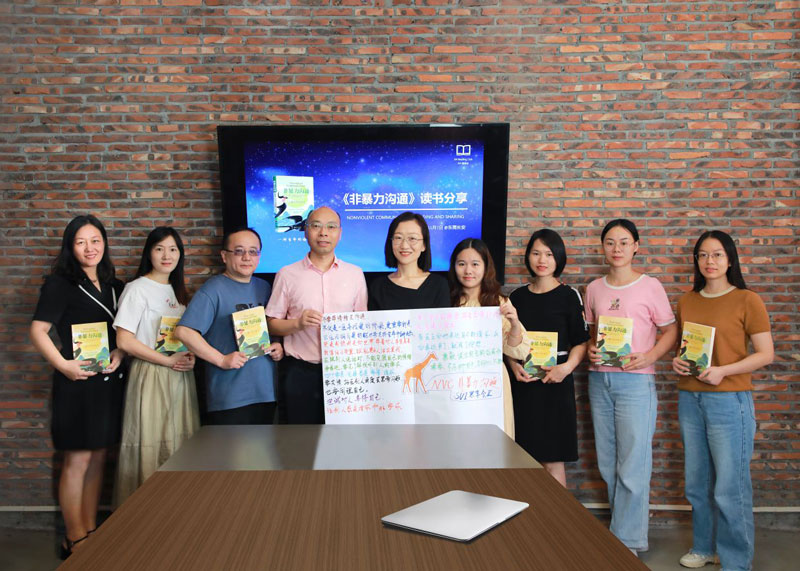How Can an Agile Supply Chain Benefit You
- Date:
- Author: SVI Content Team
- Share:
As globalization and the outsourcing of manufacturing developed, the network of the whole supply chain from different countries became more and more connected and dependent on each part.
As globalization and outsourced manufacturing expanded, supply chains grew increasingly interconnected and reliant on partners across borders.
In today’s world full of uncertain events and demand fluctuation, businesses are moving away from rigid systems. They are embracing agile supply chain strategies that allow them to adapt fast, reduce risk, and serve customers better.
Let’s see what an agile supply chain is and how to achieve flexibility in supply chain.
Part 1. What Is Agile Supply Chain
1) Agile Supply Chain Concept
According to the Association for Supply Chain Management (ASCM), it defines agile supply chain as the ability to respond quickly to unpredictable changes in customer needs by reconfiguring operations.
This concept can be traced back to the advent of globalization in the 1990s. The trend has connected suppliers, manufacturers, and distributors across countries. Supply chains have had to evolve along with rapid technological advances and market developments to adapt to globalization, reduce costs and increase efficiency.
Today, an agile supply chain is seen as a strategy that prioritizes speed, flexibility, visibility, and responsiveness in handling market shifts and external disruption.
2) Key Characteristics of Agile Supply Chain
Diversification
Avoid relying on a single supplier and country. Build a diverse supply chain network with multiple sourcing options. This reduces dependency and spreads risk. In this way, you can transfer orders to other places when turmoil occurs in one country.
For instance, if the United States imposes tariffs on Chinese goods, companies sourcing entirely from China will feel the full impact. But if only 20% of your production is based in China, the impact will be more manageable and far less damaging.
Flexibility
Agile supply chain strategy lets companies have the ability to switch suppliers, change order volumes, or reroute shipments when the market and the supply chain alter.
Responsiveness
A flexible supply chain management can react quickly to shifts in demand, policy, or global events, leading to efficiencies.
Visibility
Real-time data sharing and transparency across the entire supply chain ensure all sides can identify issues early and act fast to avoid bigger disruptions.
Resilience
The agility in supply chain can minimize the damage of supply chain volatility and recover fast from shocks.
Collaboration
The agility and resilience in supply chain require strong partnerships from the network. And tight coordination between buyers, suppliers, and logistics partners makes it a key trait.
Part 2. Why Supply Chain Agility Matters More Than Ever
1) Recent Global Supply Chain Disruptions
The last few years have seen a string of major supply chain shocks:
- War and Conflict: Ongoing conflicts in Eastern Europe and the Middle East have disrupted trade routes and created logistical uncertainties.
- Tariffs: Raised sourcing costs due to the increase in import tariffs by the U.S. In particular, it poses a serious threat to U.S. enterprises that source from China, which is the world’s factory today.
- Political Instability: Political unrest in various global regions adds complexity to cross-border trade, such as tense and unstable relations between China and the U.S.
- Trade Policy Changes: Countries like those in the EU have rolled out stricter supply chain regulations for greater transparency and compliance.
- Geopolitical instability: Rising tensions in the Red Sea, the Black Sea and the Strait of Hormuz.
- Labor Strikes: Port strikes in the U.S., Canada and Europe delayed cargo movement.
- Natural Disasters: Floods and hurricanes in the U.S., earthquakes in Asia (Myanmar 2025), wildfires, and more.
What have we learned from these?
These disruptions have made it clear that rigid supply chains are highly vulnerable. Businesses need to rethink their operations and invest in more agile, adaptable strategies to reduce risk and maintain continuity.
2) Why Should We Build an Agile Supply Chain?
To navigate the turmoil and changing market demand, companies with plans to build a stable operation can ultimately benefit from agile supply chain management.
a. Increase flexibility in handling demand volatility
One of the advantages of agile supply chain is that you can enhance your flexibility while rapidly adapting to sudden spikes or drops in demand. The responsiveness lets you shift your production strategies according to the global trade conditions.
b. Minimize risks and improve resilience with strategies
Agile supply chain strategies are better equipped to handle disruptions. By diversifying your suppliers and shipping routes, you can weaken the impact and keep your supply chain continuous and resilient when interruptions hit.
c. Maintain a competitive edge with its market sensitivity
Flexible Companies can react to market shifts faster than competitors. This helps capture market opportunities and bring new products to consumers in no time.
Need Help for Your Sourcing Project?
Let SVI Global find the right suppliers and manage your project.
We guarantee quality and on-time delivery!
Part 3. How to Build Your Agile Supply Chain Strategies
Developing strategies to maintain your supply chain agility and resilience will require you to make proactive plans and analyze the current conditions regularly. Here’s a guide.
Step 1. Analyze Product Demand
Having a clear understanding of the demand is significant in deciding the production volume. By analyzing current sales and market trends in advance, you can notice the changes in customer needs and adjust manufacturing levels accurately.
Step 2. Forecast Shifts in Supply Chain
Sourcing is an ongoing process like a marathon, where uncertainties are inevitable. It is always a good idea to assess risks and pinpoint the vulnerabilities in your supply chain. Keeping an eye on regional developments and global events enables you to respond early and reduce potential losses.
Step 3. Collaborate with Suppliers and Share Real-Time Information
An agile and resilient supply chain cannot be achieved without the concerted efforts of all parties. Strengthen your business partnership with your suppliers, shipping service providers, and customers. Help them address their issues wherever possible, because a win for them is a win for your business.
Develop an open model for sharing real-time data and operational updates, which will be useful in perceiving issues as soon as possible and taking control of the overall situation.
Step 4. Diversify Your Sourcing Network and Transportation
“Don’t put all your eggs in one basket”. To avoid over-reliance on any single supplier or region, source your products from multiple suppliers in different nations and foster long-standing partnerships with them.
It is suggested to allocate orders proportionally to various countries for production in China, Vietnam, Thailand, Indonesia, Malaysia, Myanmar, Cambodia, and India.
Diversifying your supply chain network can enhance your resilience and prevent the changes from endangering your entire supply chain.
Part 4. Agile Supply Chain Examples
1. Amazon – Used AI to Predict and Analyze Changes in Consumer Demand
Amazon developed its artificial intelligence (AI) technologies at the core of its e-commerce operations to predict demand trends, optimize inventory placement, and streamline warehouse processes in near real-time. By analyzing billions of data points from customer behavior, Amazon stays agile and responsive to market changes.
🔎 Source: Retail TouchPoints
2. Toyota – Diversified Its Sourcing Strategy Across Countries for Components
While Toyota is renowned for its lean manufacturing system, it also embraced agile practices to satisfy customer preferences and manage changes.
After the 2011 earthquake and tsunami in Tohoku and the global chip shortage, Toyota strategically diversified its supplier base in key markets through localization. This shows its ability to adjust manufacturing and sourcing strategies.
It fosters long-term partnerships with its suppliers, built on mutual trust and collaborative problem-solving. When issues arise, Toyota helps suppliers resolve problems quickly so that both of them can meet market shifts.
🔎 Source: Harvard Business Review, Thomas Net
3. Reckitt – Shifted More Manufacturing to the U.S.
In Dec 2024, Reckitt announced a $200 million investment in a new over-the-counter (OTC) pharmaceutical facility in Wilson, North Carolina. This move is a direct response to rising demand volatility for cold and flu products.
Shifting manufacturing closer to the consumer allows the company to respond faster to both seasonal spikes and unexpected surges. The ability to pivot and scale across different SKUs gives Reckitt a more agile and future-proof supply chain.
🔎 Source: The Wall Street Journal, Reckitt
More Companies Are Following Suit
With the turbulence in supply chain, what we can learn is that agility is a competitive necessity. Many top companies are taking action to diversify their sourcing network to establish an agile supply chain management.
Apple moved production of its MacBooks and other products from China to Vietnam; Mattel sourced its products from Mexico and Southeast Asia; Nike diversified its supply chain to Vietnam, Indonesia, and Cambodia; Dell announced that it will move some of its manufacturing out of China to Vietnam and Mexico, etc.
Conclusion
Global trade has created deeper interdependence and also made companies more vulnerable to instability. To thrive, not just survive, you need the ability to be responsive and navigate the unforeseen fast. And an agile supply chain has become the go-to strategy for many.
Now, start building a diversified supply chain network across multiple manufacturing hubs. This approach can spread out risk, respond to disruptions efficiently, and boost long-term resilience.
If you are looking to source beyond China, SVI Global will support you to catch the trend. We are able to help you tap into reliable supply bases in key regions like Mexico and Southeast Asia, including Vietnam, Thailand, Cambodia, Indonesia, and Malaysia, to strengthen your global sourcing network.







